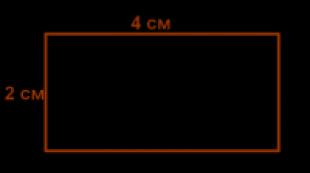Methods for connecting electric motors star-delta. Features of connecting an electric motor with a star and a triangle. Timing diagrams of the Star-Delta circuit operation
In industry and everyday life, asynchronous motors are widely used, which are powered directly from an alternating voltage. In the stator of such a motor there are three windings offset from each other by 120 degrees - this is done in order to create the same winding at any point of the circle around the stator. To connect such electric motors, two main circuits are used: star and delta connections. Let's take a closer look at each of these connection types. For clarity, let us denote the beginning of each of the three windings as U1, V1, W1, and their ends as U2, V2, W2, respectively.
To implement a star connection of the motor, it is necessary to connect all ends of the windings U2, V2, W2 at one point, and supply one phase from a three-phase network to the inputs of each winding.
In order to connect the motor according to the “triangle” circuit, it is necessary to connect the end of the second V2 to the beginning of the first winding U1, the end of the third winding W2 to the beginning of the second winding V1, and the beginning of the third winding W1 to the end of the first U2. The phases of the supply network are connected to the places where the windings are connected.

Watch a video about how to connect electric motors:
It is important to choose the right connection diagram for a specific engine, otherwise you may not get the necessary power from it, and in some cases, even damage the engine.
Each of these network connection schemes has both its advantages and disadvantages. For example, a star-connected motor starts very smoothly and can operate with slight overload without harm to the motor itself.
However, the maximum rated power of the electric drive in this case is unattainable - the engine will produce up to 70% of its rated power.
A triangle connection allows you to achieve rated power, however, with this connection scheme, inrush currents reach significant values. In addition, it was noticed that when connected in a triangle, the electric motor heats up during operation, which reduces its service life.
To minimize the disadvantages and fully realize the advantages of each of the schemes, a system for automatically changing the connection scheme was invented. That is, the asynchronous electric motor starts according to the “star” circuit, and when it reaches its rated speed, it switches to the “triangle” circuit and reaches its rated power. Such a change in connection schemes is realized using either starting time relays. This can also be done using a packet switch, but in this case you need to carefully monitor the operation of the motor in order to switch it at the right moment.
Another interesting video about how to connect an electric motor:
It is a useful device that is used in many areas of human activity, from everyday life to industry. In various grinding machines, on conveyors, machine units, industrial ventilation systems and more. The electric motor has 3 outputs, so a star-delta connection can be made to a three-phase AC mains or transformer.
Engine design
The windings are located on the stator, and the rotor is made short-circuited in the form of a squirrel wheel: aluminum or copper rings at the ends are connected to each other by parallel jumpers. The stator is wound in a special way with a certain number of poles, which depends on the power parameters and the supply network. Household fans have only 2 poles, industrial traction motors have 8 or more.
Benefits of using asynchronous electric motors with a star or delta connection circuit are obvious and are as follows:
Methods for connecting to the network
Now let's try to figure out what a star and a triangle are, what is the difference between them. Asynchronous 3-phase electric motor has 3 windings, which are connected in a certain way. They can be connected both to a 380 V network and to an alternating voltage of 220 V. Therefore, the motor can be considered universal, but its performance quality directly depends on the method of connection to the network or a separate supply transformer.
For example, in acceleration mode, when it is connected in series to the motor circuit to reduce the starting voltage. A frequency converter operates on this principle, regulating the initial torque by changing the frequency, preventing power consumption from exceeding more than 10-20%. In normal starting mode, an asynchronous motor consumes up to 600% of the nominal value, which can cause automatic shutdown of the input circuit breakers.
Typically, when you open the terminal box on the motor, you will see 3 pins and additional twisting. This indicates the type of connection of the windings, which in this case is a star. By unwinding the common connection, you will get 6 pins, which are the ends and beginnings of each of the 3 windings. Therefore, it becomes possible to make a connection using a triangle diagram.
Sometimes, depending on the control method and the algorithm for generating control voltage in the drive, switching from star to delta is required. And you can do this automatically mode, for example during acceleration, so that the electric motor immediately provides high torque. This is most often used in frequency control systems where more tightly controlled motor dynamics and rotational speed control are required.
When and which scheme is best to use depends on the requirements, but each method has its own characteristics. For example, they consist in the developed and consumed power, the difference in linear and phase voltages, and, accordingly, dynamic and electrical indicators.
Basic formulas
Before you get acquainted with the features of how to connect a star-delta electric motor, it is worth remembering the basic formulas for calculating power and the ratio of voltages and currents between them. When calculating powered devices from an alternating voltage network or a separate transformer, the concept of apparent power is used. It is denoted by the capital letter S and is found as the product of the effective value of voltage and current U × I. Also, it is possible to calculate based on the EMF, at which S = E × I.
In addition to the full one, there are also:
- active;
- reactive power.
 In the first case, it is denoted by the letter P = E × I × cos φ or P = U × I × cos φ. In the second case, Q = E × I × sin φ or Q = U × I × sin φ. Where in the formulas E is the electromotive force, I is the current, φ is the angle between the voltage and current created by the phase shift in the windings.
In the first case, it is denoted by the letter P = E × I × cos φ or P = U × I × cos φ. In the second case, Q = E × I × sin φ or Q = U × I × sin φ. Where in the formulas E is the electromotive force, I is the current, φ is the angle between the voltage and current created by the phase shift in the windings.
If the motor windings are identical to each other in all respects, then all types of power are determined as the product of current and voltage multiplied by 3.
Star motor connection
The most commonly used is the star connection, because in this mode the necessary power is provided and good torque on the shaft is guaranteed. But it is worth understanding that an underloaded motor in a 3-phase network will consume excess power, so it is better to use a less powerful motor or adjust the frequency of the supply transformer or drive, depending on the voltage source.
And to determine the electrical parameters of the network, it is necessary to use the relation √3. Initially, it should be noted that when connected in a star, the linear and phase currents are the same, and the voltage is determined by the formula U = √3 × U f. It is not difficult to find the phase voltage from it. Accordingly, powers are determined taking into account this ratio:
S = √3 × U × I
It should be remembered that if the transformer, in addition to 3 phases, also has a 4th terminal from the middle point, then it must be connected to the electric motor .
Features of using a star connection
 In enterprises, and in all other areas, the main type of connection for 3-phase motors is a star, and they are powered from a common substation or a separate transformer, thus providing galvanic isolation. The connection circuit of its windings does not particularly affect the operation of the engine. If they are connected in a triangle, then the output voltage will be 1.73 times less and by connecting the motor to its windings in a delta circuit, you can achieve approximately the same torque as in normal mode.
In enterprises, and in all other areas, the main type of connection for 3-phase motors is a star, and they are powered from a common substation or a separate transformer, thus providing galvanic isolation. The connection circuit of its windings does not particularly affect the operation of the engine. If they are connected in a triangle, then the output voltage will be 1.73 times less and by connecting the motor to its windings in a delta circuit, you can achieve approximately the same torque as in normal mode.
The phase currents when connected according to a star circuit are equal, and the voltage supplied to each of the windings is 1.73 times less. The engine gains its torque over a longer period of time, but does not overheat. In this mode, motors are used on fans, pumps, augers and other units. But, if it is necessary to increase the torque and traction capacity, then it is briefly switched to a triangle.
In this case, the full mains voltage is supplied to the windings, and, consequently, an increased current, which leads to the release of additional power on the shaft and heating of the motor. The delta switching mode is used to accelerate the engine start, and therefore return the connection circuit to its original state. Long-term operation in this mode will lead to rapid failure.
The asynchronous electric motor is powered from a three-phase AC network. Such a motor, with a simple connection diagram, is equipped with three windings located on the stator. Each winding is shifted relative to each other by an angle of 120 degrees. A shift at such an angle is intended to create rotation of the magnetic field.
The ends of the phase windings of the electric motor are brought out to a special “block”. This was done for ease of connection. In electrical engineering, two main methods are used for connecting asynchronous electric motors: the “delta” connection method and the “star” method. When connecting the ends, jumpers specially designed for this purpose are used.
Differences between "star" and "triangle"
Based on the theory and practical knowledge of the basics of electrical engineering, the “star” connection method allows the electric motor to operate smoother and softer. But at the same time, this method does not allow the engine to reach the full power presented in the technical specifications.
By connecting the phase windings in a delta pattern, the motor is able to quickly reach maximum operating power. This allows you to use the full efficiency of the electric motor, according to the technical data sheet. But this connection scheme has its own drawback: large inrush currents. To reduce the value of currents, a starting rheostat is used, allowing for a smoother start of the engine.
Star connection and its advantages

Each of the three working windings of the electric motor has two terminals - the beginning and the end, respectively. The ends of all three windings are connected to one common point, the so-called neutral.
If there is a neutral wire in the circuit, the circuit is called 4-wire, otherwise, it will be considered 3-wire.
The beginning of the terminals is connected to the corresponding phases of the supply network. The applied voltage on such phases is 380 V, less often 660 V.
The main advantages of using the star scheme:
- Stable and long-term non-stop operation of the engine;
- Increased reliability and durability by reducing equipment power;
- Maximum smooth start-up of the electric drive;
- Possibility of exposure to short-term overload;
- During operation, the equipment body does not overheat.
There is equipment with internal connection of the ends of the windings. Only three pins will be output to the block of such equipment, which does not allow the use of other connection methods. Electrical equipment made in this form does not require competent specialists for its connection.

Triangle connection and its advantages
The principle of the “triangle” connection is to connect in series the end of the winding of phase A with the beginning of the winding of phase B. And then, by analogy, the end of one winding with the beginning of another. As a result, the end of the phase C winding closes the electrical circuit, creating an unbroken circuit. This scheme could be called a circle, if not for the mounting structure. The triangle shape is given by the ergonomic placement of the winding connection.
When connected by a “triangle” on each of the windings, there is a linear voltage equal to 220V or 380V.
The main advantages of using the triangle scheme:
- Increasing the power of electrical equipment to the maximum value;
- Using a starting rheostat;
- Increased torque;
- Large traction forces.
Flaws:
- Increased starting current;
- When running for a long time, the engine gets very hot.
The “triangle” method of connecting motor windings is widely used when working with powerful mechanisms and the presence of high starting loads. A large torque is created due to an increase in the self-induction EMF caused by large flowing currents.

Star-delta connection type
In complex mechanisms, a combined star-delta circuit is often used. With this switching, power increases sharply, and if the engine, according to its technical characteristics, is not designed to operate using the “delta” method, it will overheat and burn out.
Motors with increased power have high starting currents, and as a result, when starting, they often cause fuses to blow and circuit breakers to turn off. To reduce the line voltage in the stator windings, autotransformers, universal chokes, starting rheostats or a star connection are used.

In this case, the voltage at the connection of each winding will be 1.73 times less, therefore, the current flowing during this period will be less. Then the frequency increases and the current reading continues to decrease. Then, using a relay contact circuit, a switch from “star” to “triangle” will occur.
As a result, using this combination, we will obtain maximum reliability and effective productivity of the electrical equipment used, without fear of damaging it.
Star-delta switching is permissible for electric motors with a light starting mode. This method is not applicable if it is necessary to reduce the starting current and at the same time not reduce the high starting torque. In this case, a wound-rotor motor with a starting rheostat is used.
Main advantages of the combination:
- Increased service life. Smooth start allows you to avoid uneven load on the mechanical part of the installation;
- Possibility of creating two power levels.
- At the moment of starting the electric motor, its starting current is 7 times the operating current.
- 1.5 times more power when connected windings using the delta method.
- To create a smooth start and protect against engine overloads, frequency wires are often used.
- When using the star connection method, special attention is paid to the absence of “phase imbalance”, otherwise the equipment may fail.
- Line and phase voltages with a delta connection– are equal to each other, as are the linear and phase currents in a star connection.
- To connect the motor to a household network, they often use phase shifting capacitor.
Each stator of a three-phase electric motor has three coil groups (windings) - one for each phase, and each coil group has 2 terminals - the beginning and end of the winding, i.e. There are only 6 pins that are signed as follows:
- C1 (U1) is the beginning of the first winding, C4 (U2) is the end of the first winding.
- C2 (V1) is the beginning of the second winding, C5 (V2) is the end of the second winding.
- C3 (W1) is the beginning of the third winding, C6 (W2) is the end of the third winding.
Conventionally, in the diagrams, each winding is depicted as follows:
The beginnings and ends of the windings are brought out into the terminal box of the electric motor in the following order:

The main winding connection diagrams are triangle (denoted by Δ) and star (denoted by Y), which we will analyze in this article.
Note: In the terminal box of some electric motors you can only see three outputs- this means that the motor windings are already connected inside its stator. As a rule, the windings inside the stator are connected when repairing an electric motor (if the factory windings are burned out). In such motors, the windings are usually connected in a star configuration and are designed for connection to a 380 Volt network. To connect such a motor, you simply need to supply three phases to its three outputs.
Connection diagram of electric motor windings according to the “triangle” diagram
To connect the windings of an electric motor according to the “triangle” diagram, it is necessary: connect the end of the first winding (C4/U2) to the beginning of the second (C2/V1), the end of the second (C5/V2) to the beginning of the third (C3/W1), and the end of the third windings (C6/W2) - with the beginning of the first (C1/U1).
Voltage is applied to terminals “A”, “B” and “C”.
In the terminal box of the electric motor, the connection of the windings according to the “triangle” diagram has the following form:
A, B, C—connection points for the power cable.
Connection diagram of electric motor windings according to the “star” scheme
To connect the windings of an electric motor in a star configuration, it is necessary to connect the ends of the windings (C4/U2, C5/V2 and C6/W2) to a common point, while voltage is applied to the beginning of the windings (C1/U1, C2/V1 and C3/W1 ).
Conventionally, this is depicted in the diagram as follows:
In the terminal box of the electric motor, the star connection of the windings has the following form:
Definition of winding terminals
Sometimes situations arise when, after removing the cover from the terminal box of an electric motor, you are horrified to discover the following picture:
In this case, the winding terminals are not labeled, what should I do? Don't panic, this issue can be completely resolved.
The first thing to do is to divide the leads into pairs, each pair should have leads related to one winding, this is very easy to do, we will need a tester or a two-pole voltage indicator.
If using a tester, set its switch to the resistance measurement position (underlined by a red line); when using a bipolar voltage indicator, before use, it is necessary to touch the live parts under voltage for 5-10 seconds to charge it and check its functionality.
Next, you need to take any one terminal of the winding, conditionally take it as the beginning of the first winding and accordingly sign it “U1”, then touch the “U1” terminal we signed with one tester or voltage indicator probe, and touch with the second probe any other terminal from the remaining five unsigned ends. If, having touched the second terminal with the second probe, the tester readings have not changed (the tester shows one) or in the case of the voltage indicator - not a single light comes on - we leave this end and touch the other terminal of the remaining four ends with the second probe, and touch the ends with the second probe to until the tester readings change, or, in the case of a voltage indicator, until the “Test” light comes on. Having found the second terminal of our winding in this way, we accept it conditionally as the end of the first winding and sign it “U2” accordingly.
We proceed in the same way with the remaining four pins, also dividing them into pairs and signing them respectively as V1, V2 and W1, W2. You can see how this is done in the video below.
Now that all the pins are divided into pairs, it is necessary to determine the actual beginnings and ends of the windings. This can be done in two ways:
The first and simplest method is the selection method, which can be used for electric motors with a power of up to 5 kW. To do this, we take our conditional ends of the windings (U2, V2 and W2) and connect them, and briefly, preferably no more than 30 seconds, apply three-phase voltage to the conditional beginnings (U1, V1 and W1):
If the engine starts and runs normally, then the beginnings and ends of the windings are determined correctly; if the engine hums a lot and does not develop the proper speed, then there is an error somewhere. In this case, you just need to swap any two terminals of one winding, for example U1 with U2, and start again.
Since they have high reliability - the simplicity of the design allows you to increase the engine life. With commutator motors, from the point of view of connecting to the network, things are simpler - no additional devices are needed to start. Asynchronous machines need a capacitor bank or a frequency converter if they need to be connected to a 220 V network.
How the motor is connected to a three-phase 380 V network
Three-phase asynchronous motors have three identical windings; they are connected according to a certain circuit. There are only two schemes for connecting the windings of electric motors:
- Star.
- Triangle.
By connecting the windings in a delta pattern, maximum power can be achieved. But at the start-up stage, large currents arise, which pose a danger to equipment.
If you connect in a star configuration, the engine will start smoothly, since the currents are low. True, with such a connection it will not be possible to achieve high power. If you pay attention to these points, it will become clear why electric motors, when connected to a 220 V household network, are connected only in a star configuration. If you choose a “triangle” circuit, the probability of failure of the electric motor increases.
In some cases, when it is necessary to achieve a high power rating from the drive, a combined connection is used. The start-up is carried out with the windings connected in a “star”, and then a transition to a “triangle” is carried out.
Star and triangle
Regardless of which 380 to 220 V you choose, you need to know the design features of the motor. Please note that:
- There are three stator windings, which each have two terminals - a beginning and an end. They are led out into the contact box. Using jumpers, the terminals of the windings are connected according to the “star” or “delta” circuits.
- In a 380 V network there are three phases, which are designated by the letters A, B and C.
In order to make a star connection, you need to short-circuit all the beginnings of the windings together.

And the ends are supplied with 380 V power. You need to know this when connecting a 380 to 220 Volt electric motor. To connect the windings in a “triangle” pattern, it is necessary to close the beginning of the coil with the end of the adjacent one. It turns out that you connect all the windings in series, forming a kind of triangle, to the vertices of which power is connected.
Transitional switching circuit
In order to smoothly start a three-phase electric motor and obtain maximum power, it is necessary to turn it on in a star configuration. As soon as the rotor reaches the rated speed, switching occurs and switches to delta switching. But such a transition circuit has a significant drawback - it cannot be reversed.

When using a transition circuit, three magnetic starters are used:
- The first makes the connection between the initial ends of the stator windings and the power phases.
- A second starter is required for delta connection. It is used to connect the ends of the stator windings.
- Using the third starter, the ends of the windings are connected to the supply network.
In this case, the second and third starters cannot be put into operation at the same time, as a short circuit will appear. Consequently, the circuit breaker installed in the panel will turn off the power supply. To prevent the simultaneous activation of two starters, an electrical interlock is used. In this case, it is possible to turn on only one starter.
How the transition circuit works
Features of the functioning of the transition circuit:
- The first magnetic starter is turned on.
- The time relay is started, which allows the third magnetic starter to be put into operation (the engine with windings connected in a star configuration is started).
- After the time specified in the relay settings, the third starter is switched off and the second starter is put into operation. In this case, the windings are connected in a “triangle” circuit.
In order to stop operation, you need to open the power contacts of the first starter.
Features of connecting to a single-phase network
When used, it will not be possible to achieve maximum power. In order to connect a 380 to 220 electric motor with a capacitor, you need to follow several rules. And the most important thing is to correctly select the capacitance of the capacitors. True, in this case, the motor power will not exceed 50% of the maximum.

Please note that when the electric motor is connected to a 220 V network, even if the windings are connected in a delta pattern, the currents will not reach a critical value. Therefore, it is permissible to use this scheme, even more so - it is considered optimal when operating in this mode.
Connection diagram for 220 V network
If power is supplied from a 380 network, then a separate phase is connected to each winding. Moreover, the three phases are shifted relative to each other by 120 degrees. But in the case of connecting to a 220 V network, it turns out that there is only one phase. True, the second one is zero. But with the help of a capacitor, a third is made - a shift of 120 degrees is made relative to the first two.

Please note that the easiest way to connect a motor designed to be connected to a 380 V network is to connect it to 220 V using capacitors only. There are two more methods - using a frequency converter or another one. But these methods increase either the cost of the entire drive or its dimensions.
Working and starting capacitors
When starting an electric motor with a power below 1.5 kW (provided that there is no load on the rotor at the initial stage), only a working capacitor is allowed. Connecting an electric motor 380 to 220 without a start capacitor is possible only under this condition. And if the rotor is exposed to a load and motor power of more than 1.5 kW, it is necessary to use a starting capacitor, which must be turned on for a few seconds.

The working capacitor is connected to the zero terminal and to the third vertex of the triangle. If you need to reverse the rotor, then you just need to connect the capacitor output to the phase, and not to zero. The starting capacitor is turned on using a button without a latch in parallel with the working one. It participates in the work until the electric motor accelerates.
To select a working capacitor when turning on the windings according to the “delta” circuit, you need to use the following formula:
The starting capacitor is selected empirically. Its capacity should be approximately 2-3 times greater than that of a worker.









